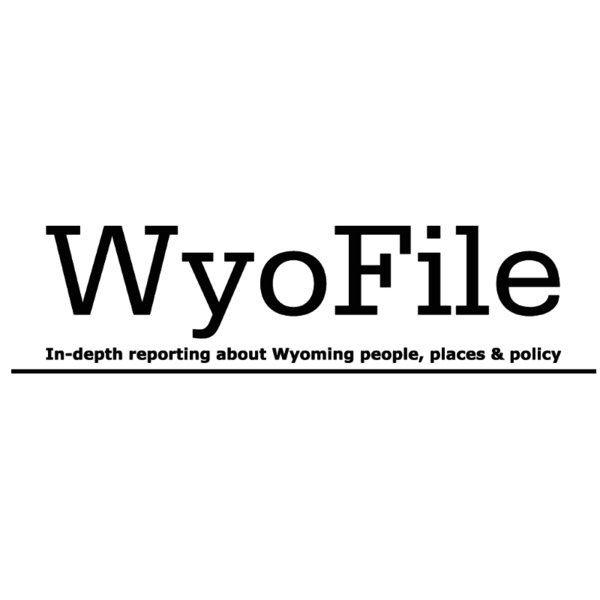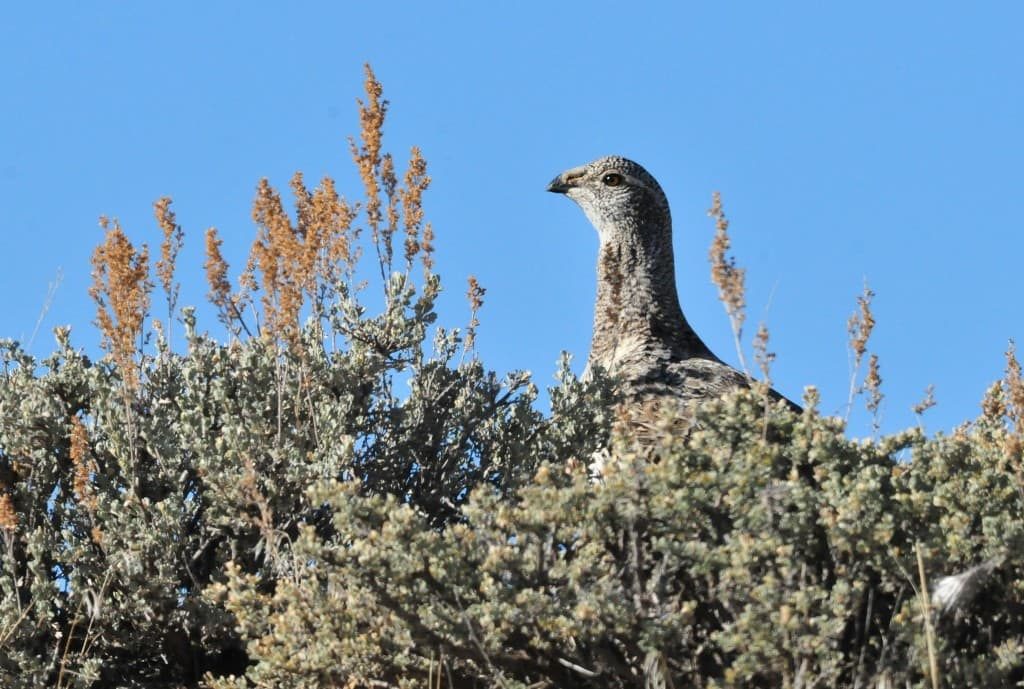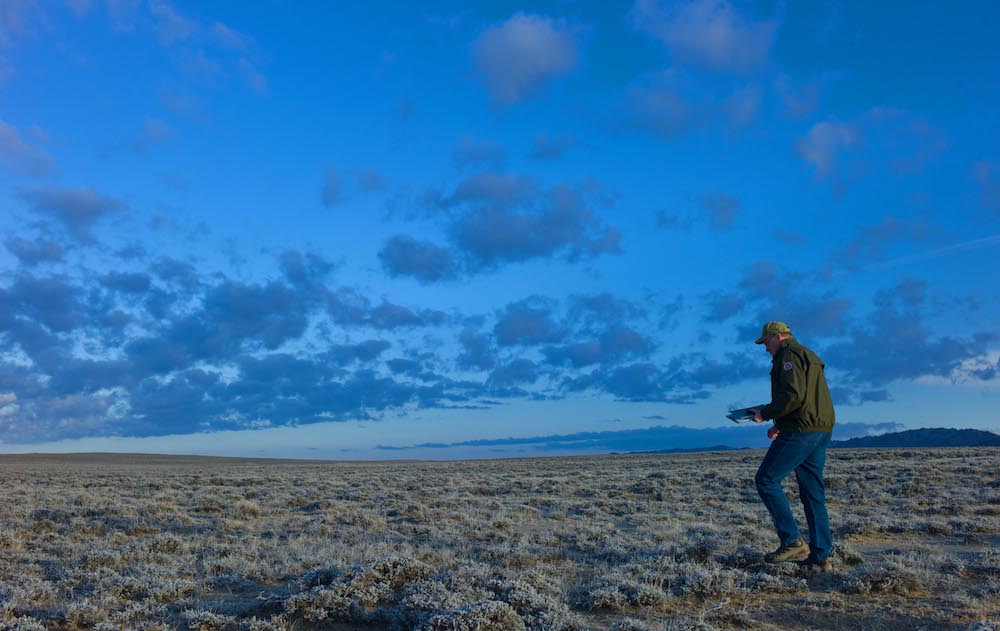Scientists blast inaction on, denial of sage grouse troubles

In some 50 years of working as a sage grouse scientist, Clait Braun has seen it all. He’s witnessed the adoption of conservation plans, their subsequent dilution, the loss and degradation of sage grouse habitat, the waxing and waning of populations.
He even helped discover and document a new species — the Gunnison sage grouse, distinguished by its inordinately long neck plumage — in the late 1990s. He’s so highly regarded that courts accept his descriptions of species’ health and status as expert testimony.
Over the decades, Braun has battled bureaucracy, tangling with politicians and wildlife officials in Colorado where he worked most of his career. Time and again, he says, he’s heard them explain away declining populations of greater sage grouse as insignificant events.
Population slides are part of a pattern that includes recovery, bureaucrats have said and continue to say. There are other excuses, Braun said: populations are cyclical … it’s happening across the Western landscape, so we’re not to blame … prolonged drought.
Against this backdrop, bad news for greater sage grouse has continued to mount. Spring population surveys of the chicken-sized bird showed a continued three-year slide in 2019. Population estimates, meanwhile, were down an average of 44% across 12 western states and provinces over the last three years.
Braun decided he’d had a gut of it. What’s been described as a roller coaster ride for greater sage grouse, a ride that’s due for an upswing, has in fact been an overall decline indicating the fragile species is in dire straits, he contends.
So, with two colleagues, the retired biologist wrote a piece (see below) that calls greater sage grouse a “species in crisis” and those in charge of its health “agencies in denial.”
“State wildlife agencies appear eager to dismiss recent population declines as merely being a result of a low in the ‘cycle’ or related to unfavorable weather,” he and co-authors wrote in the December 2019 issue of Grouse News, an international, scientists’ newsletter. Cycles don’t adequately explain the declines, he and colleagues Jack Connelly and Michael Schroeder wrote. Blaming population losses on cycles or weather “seems to be an abdication of responsibility,” their essay reads.
If Braun had his way, greater sage grouse would be listed under the Endangered Species Act as threatened in every state but Wyoming, he said.
A need for scientific consensus
Wyoming Game and Fish Department Sage Grouse and Sagebrush Biologist Leslie Schreiber challenged the article’s conclusion, at least for Wyoming. “The sage grouse is not in a crisis,” she said in an interview.
A graph of population estimates between 1996 and 2019 shows that greater sage grouse numbers in the state “are within the range of variability we’ve seen in the last 20 years,” she said. “It’s too early to tell if the peaks and troughs are stair-stepping down,” to indicate long-term decline, she said.
Although the widely used method for estimating grouse populations — counting strutting males on breeding ground leks in the spring — was developed in Wyoming, it wasn’t widely and systematically applied until after the mid 1990s, Schreiber said. That puts earlier counts, and trend analyses based on them, in question, she said.
The estimates and data from before about 2000 should be viewed with “a very large grain of salt,” Schreiber said.
She also provided scientific papers that address wildlife population cycles, including one that tracked waxing and waning populations of greater sage grouse and cottontail rabbits. The 2010 paper by lead author Bradley C. Fedy supports a theory of cycles and ties the two species together in their cyclical nature.
A 2017 paper by Jeffrey R. Rowl and Fedy also documents population cycles among greater sage grouse, though it says their lengths varied. In the Wyoming basin, a geographic enclave that includes most of the state, the length of the cycles appeared to shorten, the paper said.
The papers and discussion “points to the need for more research into the nature of sage grouse fluctuations,” Schreiber said. It may be that scientists also have to get on the same page with established definitions — a separate issue to ongoing conservation efforts, she said.
“If the term ‘cycle’ is being misused… the scientific community should discuss that,” she said.
‘Things are not good’
Decades of experience with bureaucrats and politicians led Braun and others to write the article, Braun said. “We’ve been around the block a few times,” he said. “We understand the games Game and Fish agencies [play] with numbers.”
“We think the agencies misrepresent their data,” he said. “They see good things. We see things that are problematic.
“Our professional view is things are not good.”

Co-author Schroeder, an upland bird research scientist with the Washington Department of Fish and Wildlife, said enough data exists to justify the paper’s bleak long-range West-wide assessment.
“We’ve gone through this so many times, it’s almost like déjà vu all over again,” he said. “There’s always a tendency to say ‘it’s low in the cycle and the population is going to increase.’
“The reality from somebody who’s been there is that’s pretty unlikely,” Schroeder said. “They’re not going to reach levels they were in the past.”
People have become so accustomed to talking about these grouse populations in terms of cycles, he said, “we don’t even question cycles anymore. It’s taken as fact.”
Connelly, who retired from the Idaho Department of Fish and Game after working as a biologist for 30 years, also pointed to professional bureaucratic struggles. “Our concern is the Western agencies are a lot more interested in hiring spin doctors than competent biologists,” he said.
Data supporting population cycles is weak, he said, and if there was a pattern, it disappeared or became difficult to detect. Meantime, agencies overseeing greater sage grouse have not jumped to their rescue.
“We’re not seeing what I would consider an appropriate response,” he told WyoFile.
Energy development and leasing in Wyoming
Wyoming does a good job of monitoring greater sage grouse populations, Connelly said. But energy development and BLM actions, including the sale of energy leases and development in greater sage grouse habitat, are problems.
Oil and gas representatives have told WyoFile the industry is developing responsibly, that lease sales or even drilling permit applications don’t represent actual disturbance to habitat. Further, leases are sold with stipulations — such as limits on how much ground can be disturbed and when activities can take place — that are designed to protect sage grouse.
But the BLM’s sale of leases in core sage grouse habitat this year caused Wyoming’s recently retired sage grouse coordinator to protest to Gov. Mark Gordon and seek relief for the species. Gordon did not intervene as Tom Christiansen wanted, even though Wyoming’s conservation plan called for leasing areas outside core habitat first.
“I don’t hear anybody saying Tom Christiansen is wrong,” Connelly said. “He’s being cheerfully ignored by his former agency. Why would they ignore someone with that kind of knowledge?
“I think [Wyoming officials] need to be a little more honest and forthcoming about what is going on,” Connelly said.
Habitat key to numbers
Instead of causes such as weather or natural cycles, grouse numbers are diminishing due to a loss of habitat, Braun believes. “The habitat is declining in size and declining in quality,” he said. “That’s what the bird numbers show. That’s really the bottom line.
“Sage grouse may exhibit some cycles in some areas,” he said, but “the long-term trend is down — you can’t get away from that. On population graphs, each peak is less than the previous peak.”
The state is “nibbling away at the core areas” and development is intruding into vital habitat now, Braun said. He pointed to the Bureau of Land Management’s approval of the Normally Pressured Lance gas field in Sublette County where 3,500 wells may be drilled, albeit many clustered on common surface pads.
“That’s a big wintering area for sage grouse and they’re going to put wells all through that,” Braun said. The BLM leased the area for development before the winter concentration area for grouse was discovered. But the wintering area should be designated as core habitat, he said.
“Each population is getting smaller and there’s less connectivity,” Braun said. “When you lose the connectivity you really have problems.”
Residential development in Wyoming is less of an issue than in other places, he said, because of the small population here and large amount of federal land.
Not understanding the problem?
If wildlife managers attribute population declines to factors that don’t cause them, Connelly said, it only makes understanding the underlying issues more difficult
Drought may affect sage grouse in Nevada, for example, but not so much in Wyoming, he said. “You could make the case moisture is not a factor in Wyoming.”
If such is the case, attributing the grouse declines in Wyoming to drought — just like in Nevada — might miss the true cause of trouble here, he said.
Wyoming sage grouse will rebound, Connelly believes. But not to historic levels, and perhaps not even to their last high point.
The challenge for wildlife managers is that threats to greater sage grouse are expansive — wildfire, development, invasive species and other factors, Connelly said. Yet responsive actions that states take are much smaller.
“The positives are so often outweighed by the damage,” he said, “We can’t do enough positive to keep up with the scale of negatives.”
If the federal government listed greater sage grouse as threatened in all Western states but Wyoming, managers would have to develop recovery plans, Braun said. That’s what happened to the species he helped discover — the Gunnison sage grouse.
Today there are Gunnison leks at which only a handful of males show up each spring.
“If we had done this in the year 2000 it would have been more successful,” Braun said. “It’s very positive but it’s too late” for the Gunnison grouse.

SHARE ON
You may also like
The role corn plays for gamebirds and economies ac...
Sportsmen’s conservation policy issues from publ...
Sportsmen’s conservation policy issues from publ...


























